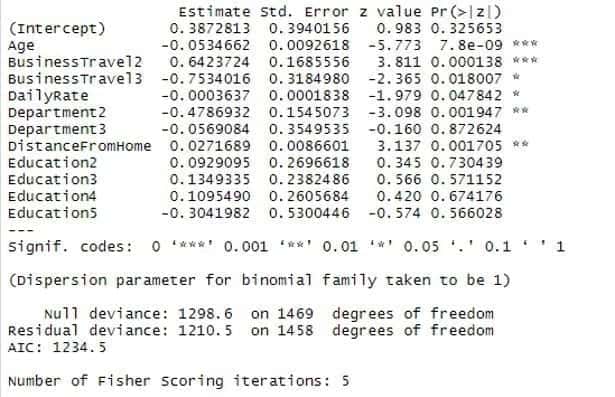Using Predictive Analytics to Reduce Employee Turnover
Industries with shift workers exhibit some of the highest employee turnover rates compared to other sectors. Companies are constantly seeking ways to reduce this large cost and lower turnover. In this article, we discuss applying advanced predictive analytics to provide a calculated, proactive approach to this issue.
Employee turnover has long been thought of as just another part industries with shift workers (restaurants, retail, etc.), despite the large costs associated with it. Some of these costs from the turnover of just one employee include:
For a recent hackathon of ours, we looked at the restaurant industry and the use of predictive analytics. A lot of these companies already utilize data analytics for business intelligence to manage and optimize multiple aspects of their businesses. Using advanced analytics to curb employee turnover would be a natural progression to further reduce costs and optimize their businesses.
The Impact of Employee Turnover
Sitting at 74.9% total separations (quits, layoffs/discharges, other separations) during 2018, the restaurant industry currently holds the second highest turnover rate across all private industries measured in the U.S. Bureau of Labor Statistics Report. Since 2010, this total separations rate has increased by 31.2%, which shows a worrying trend for all front-line managers in the restaurant industry.
The Cornell University Center For Hospitality Research found that the lowest total turnover cost of a front-line employee is $5,864. They calculated that number by factoring in the pre-departure cost, recruiting/selection cost, orientation/training and most importantly, the productivity loss cost. This high turnover rate not only has a high monetary value but can also affect customer experience and satisfaction over time.
Addressing the Problem
Employee attributes like demographic and employment history are data that restaurants and managers will likely already have available. Combined with previous employee separations, this data can be used to build a predictive model that can determine the likelihood of an employee leaving the company.
Using a regression model in an applicable program (such as Azure Machine Learning or R), we can begin to identify employee attributes that are highly correlated to turnover and develop a scoring model. This model can quantitatively identify and score employees based on their propensity to leave. Using a sample dataset publicly available from IBM, some attributes were pulled out to analyze in a simple regression model built in R. The results of this regression model are shown below.

From the results of this regression, we can look at some observations to begin to make sense of the predictive model. Each row represents an attribute of an employee, and each column represents a different statistical variable. One of the important variables to observe is the p-value, which is found in the last column Pr(>|z|). A p-value that is less than 0.05 means that the attribute is statistically significant.
From the grid, the smallest p-value belongs to the Age attribute- this means that age is significant when determining if an employee will leave. This makes sense, as an older employee may have been at the company longer and will be significantly less likely to quit than a younger employee who may have been there for only a short time. This rationale can be extended to the problem at hand by applying the logic to potential hires. If a potential hire has a work history where multiple recent positions were only held for a few months to a year, while it is common knowledge this is a strong indicator if the candidate will be likely for turnover, it is shown here there is also statistical evidence to support this.
Attributes of interest can be assessed and scored to determine what makes both potential and current employees likely to leave. Some factors that could influence if a current employee may leave may be
By identifying at-risk employees, management can proactively address the issues with these employees as well as any underlying problems. At a broader scope, this enhanced insight can also help management boost morale and improve training, employee engagement and satisfaction, and hiring practices.
Looking for more on Business Intelligence?
Explore more insights and expertise at smartbridge.com/data
Keep Reading: What is Advanced Analytics?
There’s more to explore at Smartbridge.com!
Sign up to be notified when we publish articles, news, videos and more!
Other ways to
follow us:


